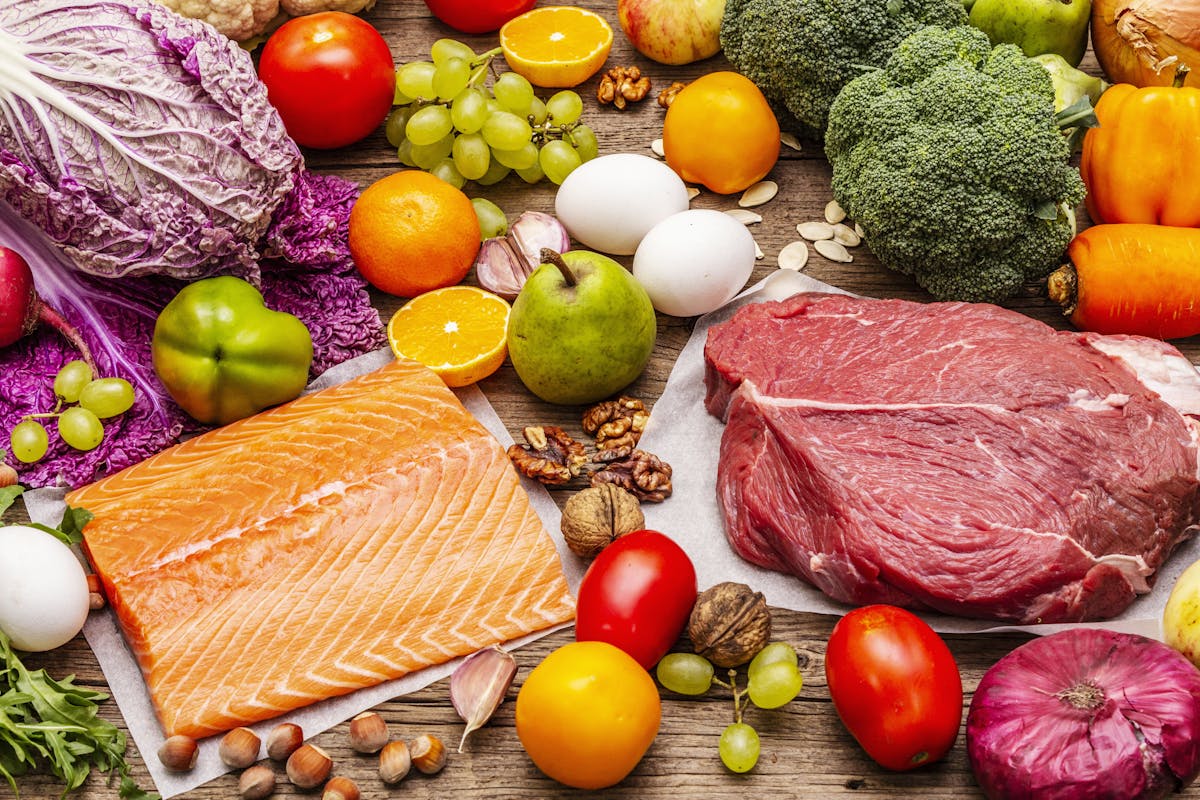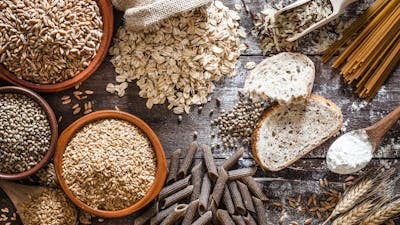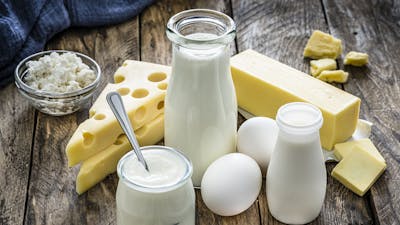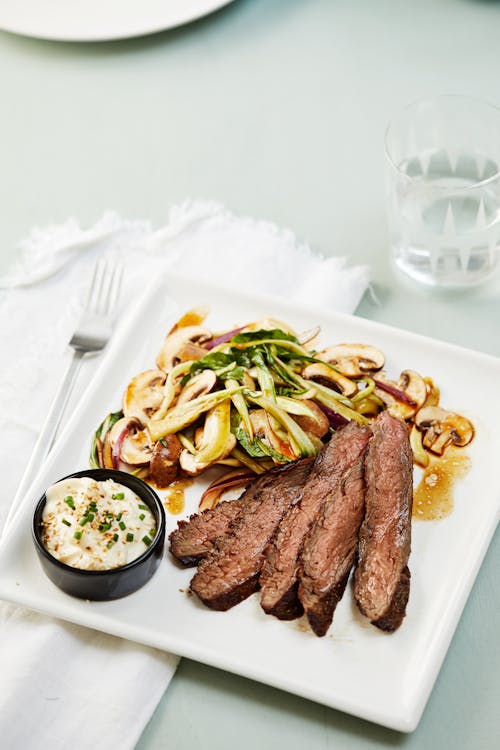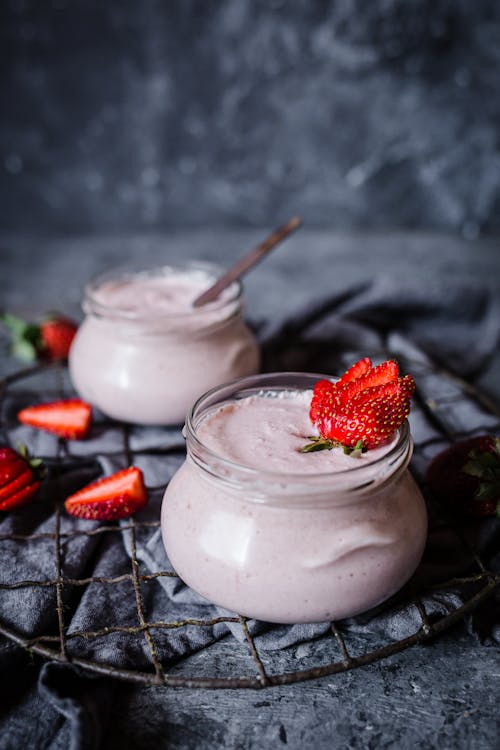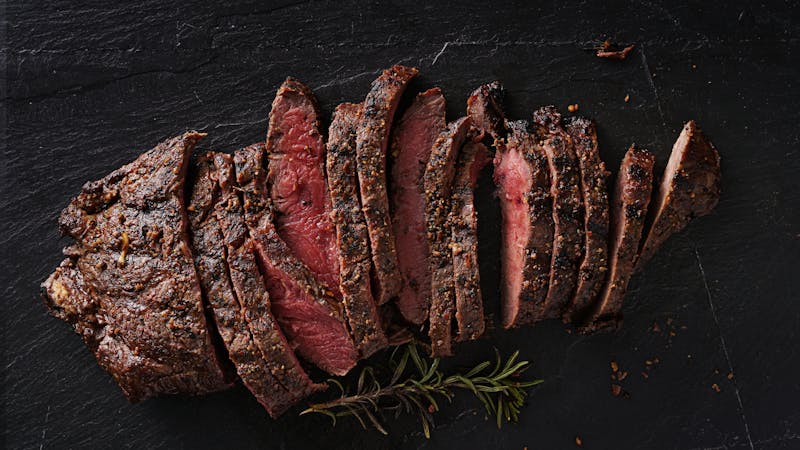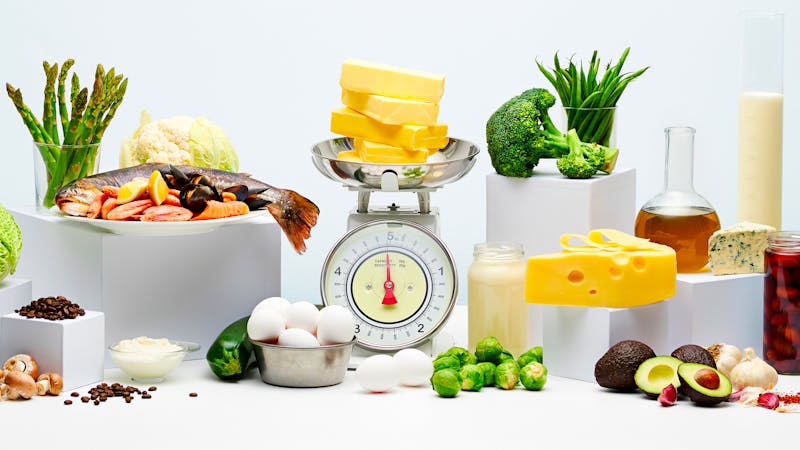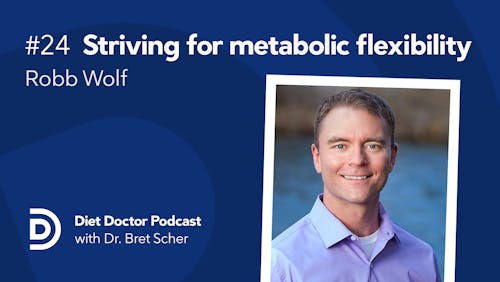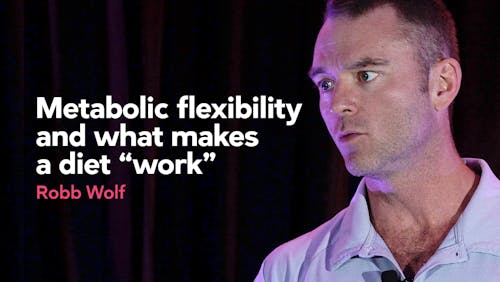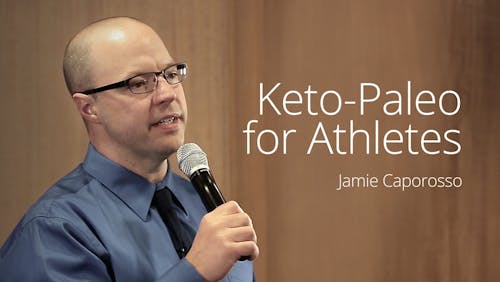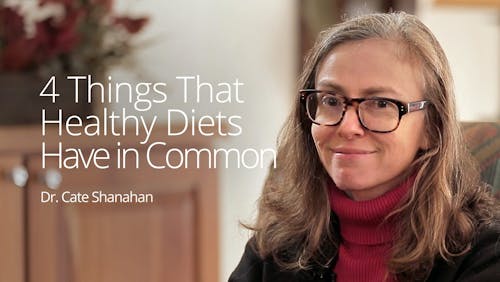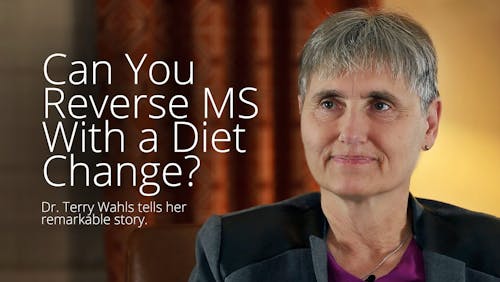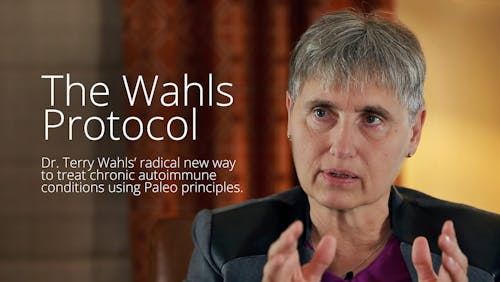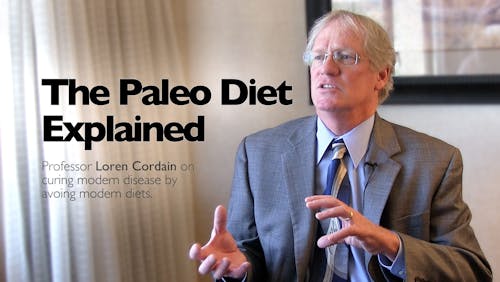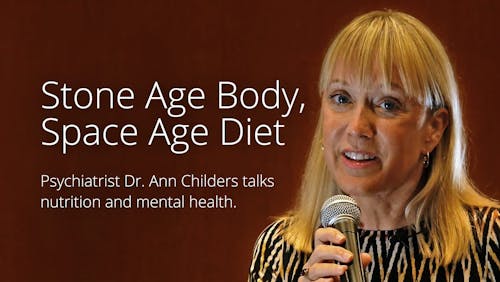Is the paleo diet right for you?
Could you survive and thrive by eating only the foods eaten by your ancient ancestors, who walked this earth more than 10,000 years ago?
This ancient way of eating is referred to as the paleolithic, or paleo diet — and has been a popular dietary style for nearly two decades.
Should you start eating paleo, would your health, weight, or waistline improve?
Does it have scientific validity? What are the rules for paleo diet foods? And how does a paleo diet differ from a low-carb or keto diet?
This guide will answer these questions and more, telling you everything you need to know to decide if the paleo way of eating may be right for you.
What is the paleo diet?
The paleo or paleolithic diet goes by many different names: the hunter-gatherer diet, the caveman diet, the stone-age diet, the prehistoric diet, the primal diet, and the ancestral diet.
At their core, they all have the same basic rules: Eat only foods that could have been eaten by our genetic ancestors, who existed 2.4 million to 10,000 years ago.
Eating paleo means avoiding any foods, such as grains or dairy, that emerged after the Agricultural Revolution began in roughly 10,000 BC.
A paleo diet excludes modern foods of the last 100 years. This means avoiding processed foods, industrialized food ingredients, agri-business hybrids like genetically modified crops, and other edible concoctions not found in nature.
The theory is that our genes evolved over hundreds of thousands of years and we’ve not had enough time to adapt to these post-paleo foods.
As a result, the chronic health conditions that plague modern society — obesity, heart disease, diabetes, auto-immune disorders, metabolic syndrome, even some mental health conditions — stem from departing from the way we genetically evolved to eat.
Some, such as anthropologist and author Jared Diamond, have compared human’s evolutionary history to a 24-hour clock in which one hour represents 100,000 years of human life on earth. We, humans, lived as hunter-gatherers for 23 hours and 54 minutes.
The time since the Agricultural Revolution is just six minutes, and the last 100 years mere seconds.1 The paleo theory is that such a short evolutionary span, genetically speaking, is simply not enough time for our genes to adapt to these new forms of food.2
Does that mean that to eat like a caveman you have to sharpen your spear and go back to hunting and foraging for everything you eat?
Fortunately, even paleo purists say you can still go to your local supermarket and fill your cart with an array of acceptable foods for your breakfast, lunch, and dinner.
You just have to look at everything you plan to eat through a stone age lens, asking: “Could I have eaten this more than 10,000 years ago?”
Foods to eat and avoid
So what’s on the paleo menu? Think whole, natural foods with minimal processing and no ingredient list.
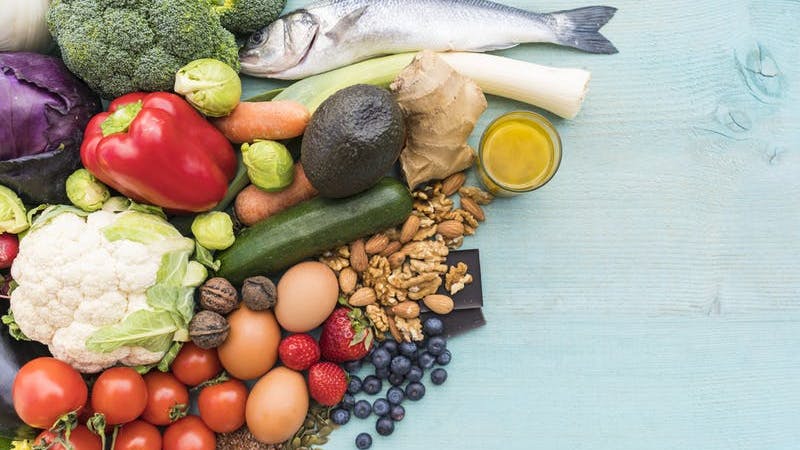
Fats like lard, tallow, olive oil, and coconut oil are OK. Honey is allowed, too. Coffee and tea, while clearly not paleo, are tolerated, but purists stick to water.
Those who follow a strict paleo diet would go for grass-fed beef because it is leaner and more natural. Wild-caught fish is favored over farmed fish; and free-range chicken and eggs over those caged or given antibiotics.
The complete list of foods to avoid are:
- Grains: No wheat, corn, barley, oats, rye, and rice. Even ancient grains like quinoa, millet, amaranth, teff, and sorghum are off the table. Also forbidden is anything made from these grains such as bread, beer, crackers, cereals, porridge, granola.
- Dairy: No milk, cream, butter, cheese, or yogurt products of any kind. (This is controversial as some 35% of modern populations, especially those of Northern European descent, appear to have evolved to digest milk and dairy products in the last 12,000 years.)3
- All sugars: That means no cane or beet sugar, no maple syrup, agave syrup or high-fructose corn syrup; and nothing made from these items like candies, soft drinks, sweets, pastries, cakes, cookies, ice cream. No chocolate.
- Legumes: Since legumes are considered cultivated agricultural products, avoid beans, lentils, soybeans, tofu, and soy products.
- Industrial oils: If it takes a machine and an industrial process, like heat and solvents, to extract the oil from a seed, nut, grain, or vegetable, do not eat.
So, no corn oil, vegetable oils, or seed oils like canola oil, soybean oil, safflower oil, etc. No trans-fats or hydrogenated oils, like margarine or vegetable shortening. - Artificial sweeteners: No aspartame, sucralose, erythritol, or other non-caloric sugar alcohols. Stevia in its natural leaf form would be okay, but not as a processed product.
- Alcohol: Wine, beer, and spirits are avoided.
- Salt: While herbs and spices are generally allowed, adding extra salt to foods is discouraged by some, but not all proponents.
- No processed foods: If it comes in a box, package, or off a food production line, it’s forbidden. If it’s wrapped in plastic or cardboard and has a list of ingredients, it’s not paleo.
Further reading
Sample daily paleo meal plan
Fortunately, most paleo diet followers embrace the era of prehistory when homo sapiens had mastered the control of fire, so you don’t need to eat your ancient food cold and raw. You can cook it on your modern stove, in the comfort of your heated kitchen.
What could a typical day of eating look like for a modern paleo eater? Here are some ideas:
| Breakfast: | Fried or boiled eggs on a bed of spinach. A bowl of seeds, nuts, and some dried or fresh fruit. Black tea, coffee, or water to drink. Try plain fried eggs with arugula. |
| Lunch: | A slice of meat like steak or with a fresh salad; some fish with vegetables or salad. Leftover garlic chicken with a side salad is perfect. |
| Dinner: | Usually a fried or grilled piece of meat or fish, with vegetables. A handful of nuts or a bowl of fruit for dessert. This grilled salmon with olive tapenade fits the bill. |
| Snacks: | Dried meat, nuts, dried or fresh fruit |
Paleo recipes
History of the paleo diet
Who came up with these theories and rules for ancient eating? From Charles Darwin, to Weston Price and Arnold Devries, several individuals over the last century contributed to the concepts behind a paleo diet.
However, it was US author and exercise physiologist Loren Cordain whose best-selling 2002 book The Paleo Diet popularized the concepts and grew it into a global movement. His subsequent books and website are still the leading sources for paleo information.
Cordain advocates that people following the diet should eat by paleo principles 85% of the time and feel free to eat more modern food 15% of the time as a way to stick to the diet over the long-term.
Hundreds of other paleo authors, chefs, bloggers, and food and health writers have followed Cordain’s lead. Together they have collectively kept the diet in the forefront, making it one of the most persistently popular alternative ways of eating for weight loss, health, and wellness.
Criticism of a single “paleo diet”
Experts in ancient anthropology and in genetic evolution have criticized the paleo diet for an oversimplification of a complex human evolutionary past.
Many anthropologists have noted that our earlier ancestors were always “opportunistic omnivores” — meaning they’d eat anything edible they could get their hands on. (Insects and grubs anyone?)4
Since humans occupied so many different geographic settings, diets varied hugely by location as well as culture and behavior. There is simply no one paleo diet.5
Evolutionary geneticists point to examples of human genetic adaptations since the agricultural revolution, such as the selective pressures that favored genes enabling the digestion of milk (lactase) and starch (amylase) among certain populations.
These sorts of adaptations discount the sweeping statement that 10,000 years is too short a time to evolve to eat new foods.6
Despite these criticisms, some, although not all, scientific studies suggest the popularly defined paleo diet may be beneficial for health and weight loss.
Research evidence for paleo
What does the scientific evidence say about the theory and the practice of eating paleo? The picture is mixed.
More than 1,200 research studies and review articles about the paleo diet have been published in medical journals since 1985. However, most of these articles and studies are considered poor quality in terms of the standards of scientific evidence.7
The following are some of the most notable clinical trials in humans and they do show potential for weight loss and metabolic improvements:
- A 2007 small randomized controlled trial compared paleo to the Mediterranean diet in 29 patients with ischemic heart disease and impaired glucose metabolism over 12 weeks.8 Both groups lost approximately the same amount of weight, but the group eating the paleo diet showed significantly decreased waist circumference and improved glucose sensitivity.
- A 2014 RCT followed 70 obese post-menopausal women for two years. The women were randomized to eat either a paleo diet, or one based on the nutritional recommendations of the council of Nordic nations.9 In the first six months, the women eating the paleo diet lost significantly more weight than the reference diet group, although at two years there was no significant difference in weight loss between the two groups.
- In a 2019 systematic review and meta-analysis of randomized trials (considered the strongest type of evidence) researchers analyzed 11 high-quality studies.
They found that the paleo diet led to more weight loss, reduced waist circumference, and lower body mass index. However, they noted that more randomized trials, with more people and for longer duration, are needed to confirm the results.10 - A 2020 meta-analysis of randomized trials of the paleo diet looked at its role as a nutritional therapy for people with high blood sugar and insulin resistance.11 It found a paleo diet did not differ from other types of diets “perceived as healthy” (such as a diabetes diet, Mediterranean diet, and diet recommended by the Dutch government) in its ability to better manage glucose and insulin in subjects with altered glucose metabolism.
Some of the trials included in the 2019 systematic review found that the diet tends to be more filling and satiating than other diets, such as calorie-restricted low-fat diets.
They also show that the paleo diet can lead to weight loss, reduced waist size, reduced blood pressure, and improved blood lipids. But the diet can be hard for some people to stick to over the long-term.12
One study found that because of the lack of consuming dairy products, people who eat the paleo diet are at risk of not consuming the recommended amount of calcium in their diet.13
Paleo vs. keto
What is the difference between a paleo diet and a low-carb diet or keto diet? Can you eat a diet that is both paleo and keto, too?
First, the paleo diet is not considered a very low-carb diet. While it does cut out major sources of carbs, especially sugar, processed foods, and grains, it can have much higher carb counts because it allows all types of fruit, tubers (potatoes, sweet potatoes, beets), and honey.
Fruit and vegetables
On a keto diet, you do not eat tubers or honey, which are both high in carbohydrates. The carbs in a keto diet are mostly above-ground vegetables, which are lower in carbs than root vegetables like potatoes or sweet potatoes.
A keto diet also only allows low-carb fruits, specifically blackberries, raspberries, and strawberries, and in limited amounts. Other higher-carb fruits are discouraged.
For example, eating one banana (20 grams of net carbs) hits your recommended net carb count on a keto diet for the entire day. As well, people with type 2 diabetes or other metabolic issues can find eating fruit raises their blood sugar much too high.14
Dairy
Another big difference between paleo and keto is the consumption of dairy products.
The paleo diet forbids all dairy. While a keto diet recommends against milk (skim, 2%, whole milk) because milk is high in sugar (lactose), the keto diet generally encourages eating high-fat dairy.
That’s because butter, cheese, whipping cream, and high-fat plain yogurt are good sources of healthy fat, protein, vitamins, and minerals.15
However, the individual response to dairy varies greatly. Some people are sensitive to dairy, or are lactose intolerant, and they feel better or get better health results if they avoid dairy.
Processed keto products
A keto diet also allows some more modern inventions, such as non-caloric sweeteners in moderation.
Some keto foods that are processed are also allowed — such as cured meats like bacon and ham and deli meats. Additionally, some specialized keto products (low carb flours like almond flour and coconut flour, psyllium husk) are used regularly in keto recipes.
Alcohol
While a paleo diet avoids alcohol, a keto diet allows alcohol in moderation — as long as it is low carb. Examples of low-carb alcohol include dry white or red wine, or distilled spirits like vodka, gin, or scotch.
However, too much alcohol on a keto diet can contribute to weight loss stalls or lead to other health issues.
Paleo keto diet
It is possible to do a paleo diet that is keto, too. Such a diet would consist of just meat, eggs, seafood, and above-ground vegetables, with some natural fats like tallow, lard, or coconut, olive or avocado oil. Low-carb berries in moderation would also be allowed.
There is a growing body of scientific evidence supporting a low-carb or keto diet for a wide range of health conditions, particularly weight loss, type 2 diabetes, and epilepsy. However, there is almost no research evidence that has studied a paleo and keto diet together.
Summary
The paleo diet has been a popular way of eating for almost two decades. Eliminating all foods that have arisen since the agricultural revolution more than 10,000 years ago means avoiding several common foods like sugar, grains, dairy, and alcohol. Additionally, all processed foods are eliminated in favor of a whole, minimally processed diet in its most natural form.
Research evidence has shown that eliminating some of these foods can result in weight loss, reduced waist size, and improved metabolic health.
A keto diet shares some of the principles of a paleo diet, but not all. The paleo diet allows more fruit and below-ground vegetables, while a keto diet allows high-fat dairy and low-carb alcohols.
/ Anne Mullens
Paleo videos
Discover 1987: The worst mistake in the history of the human race [expert review, ungraded] ↩
Annual reviews in Nutrition 2010: Evolutionary adaptations to dietary changes [overview article; ungraded] ↩
Annual Review of Genomics and Human Genetics 2017: On the evolution of lactase persistence in humans [genetic study, ungraded]
International Union of Biochemistry and Molecular Biology (IUBMB) Life 2013: How long have adult humans been consuming milk? [critical review, ungraded] ↩
National Geographic 2004: For most people, eating bugs is only natural [feature article, ungraded] ↩
Nutritional Review 2013: Beyond the paleolithic prescription: incorporating diversity and flexibility in the study of human diet evolution [expert review, ungraded] ↩
Annual Review of Genomics and Human Genetics 2017: On the evolution of lactase persistence in humans [genetic study, ungraded]
Nature Genetics 2007: Diet and the evolution of human amylase gene copy number variation [genetic study, ungraded]
Annual Review of Nutrition 2010: Evolutionary adaptations to dietary changes [expert review, ungraded] ↩
Some of the research weaknesses include animal studies, observational findings, non-randomized studies, studies with too short a time-frame or too few test subjects, or poor compliance with the diet among those assigned to it. ↩
Diabetologia 2007. A Palaeolithic diet improves glucose tolerance more than a Mediterranean-like diet in individuals with ischaemic heart disease [randomized trial; moderate evidence] ↩
European Journal of Clinical Nutrition 2014: Long-term effects of a Palaeolithic-type diet in obese postmenopausal women: a 2-year randomized trial [RCT, moderate evidence] ↩
Nutrition Journal 2019: Influence of paleolithic diet on anthropometric markers in chronic disease: systematic review and meta-analysis [strong evidence] ↩
Journal of Clinical Medicine 2020: The effect of the paleolithic diet vs. healthy diets on glucose and insulin homeostasis: A systematic review and meta-analysis of randomized controlled trials [strong evidence] ↩
Cardiovascular Diabetology 2009: Beneficial effects of a Paleolithic diet on cardiovascular risk factors in type 2 diabetes: A randomized cross-over pilot study [pilot RCT, very weak evidence]
European Journal of Clinical Nutrition 2009: Metabolic and physiologic improvements from consuming a paleolithic, hunter-gatherer type diet [observational study, very weak evidence]
Nutrition Journal 2013: Subjective satiety and other experiences of a Paleolithic diet compared to a diabetes diet in patients with type 2 diabetes [RCT, moderate evidence]
Lipids in Health and Disease 2014: Favourable effects of consuming a Palaeolithic-type diet on characteristics of the metabolic syndrome: A randomized controlled pilot-study [RCT pilot, weak evidence] ↩
Adequate calcium can be obtained from non-dairy sources like canned salmon, sardines, shrimp, and many vegetables, and supplements.
European Journal of Clinical Nutrition 2008: Effects of a short-term intervention with a paleolithic diet in healthy volunteers. [pilot randomized study; weak evidence]
Also, in the two-year trial of menopausal women, some of the women developed iodine deficiency, likely due to not eating iodized salt, dairy, and other sources of iodine while following the paleo diet. Paleo-friendly seafood and fish usually have ample amounts of iodine.
European Journal of Clinical Nutrition 2018: A Paleolithic-type diet results in iodine deficiency: a 2-year randomized trial in postmenopausal obese women [moderate evidence] ↩
PLoS Biology 2018: Glucotypes reveal new patterns of glucose dysregulation [nonrandomized study, weak evidence] ↩
Are you worried about saturated fats? You likely don’t have to be. Read more in our detailed guide on saturated fats. ↩
